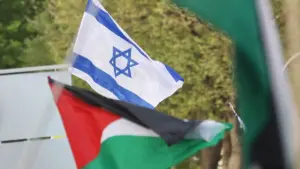
After Geneva, especially after the meeting in the United Arab Emirates, there was some optimism. But what the US delegation continues to define as “details” risks proving to be an insurmountable obstacle. At least in the time envisioned by United States President Donald Trump.
CONTACT LINE
The first element of friction to emerge from the Russian-American design was the surrender of territory by Kiev. Vladimir Putin’s goal is clear: to ensure that Ukraine cedes not only Russian-occupied territories but also other territories Moscow considers part of its territory. In this regard, Washington appears to have taken a step back. The negotiations, according to the US and Ukrainian delegations, will start from the “contact line”, with a freeze on the front lines. But this clause is definitely based on one condition: the weapon stops and it is possible to determine what the line is.
The territorial question was then combined with a perhaps more sensitive topic: the future of Ukraine. And from two points of view. The first is an economic issue, relating to reconstruction and how this will be financed. Washington envisions using only part of the frozen Russian assets, and some of the assets being returned to Moscow. Europe, on the other hand, as reiterated by French President Emmanuel Macron, wants to have its say on this issue and a solution is expected to be reached in the next few days. Commission President, Ursula von der Leyen, said this was a crucial issue. But the problem is also to iron out internal divisions within the EU, with some member states, most notably Belgium, opposing the use of the asset, while others believe it is the only viable option to avoid burdening the coffers of countries on the Old Continent.
WEAPON
Another theme of Ukraine’s future is military and strategic. The first draft envisaged a maximum number of troops that was difficult for Zelensky, who could not accept that sovereignty, espoused in the US plan, could be tested by limitations on armed forces. Since yesterday it seems that a compromise line has been in effect: maintaining the maximum limit but up to 800 thousand troops. This idea appears to have gained ground even among the most reluctant Ukrainian officials. However, due to military limitations and possibly limited weapons in Ukraine’s arsenal, Western countries will have to reassure Kiev regarding its future security. These guarantees, so far, have not been defined in detail. In the first stage, there was talk of a mechanism substantially identical to NATO’s Article 5, which provides for the common defense of allies. Other commitments appear highly uncertain, even uncertain. Among the “Willing” there continues to be speculation about multinational powers supporting Kiev, but this is a scenario that risks seeing Moscow outright rejection, especially with contingents from NATO countries. And this also involves the issue of future relations between the Kremlin and the West, not only the United States, but also the Atlantic Alliance and the European Union. Trump wants to quickly re-enter Russia into international forums, as well as immediately activate an envisioned trade agreement with Putin. Europe has more doubts, as seeing Moscow in the G8 would seem like a reward for the invasion. Putin has never denied that this war was also the fruit of his idea to see the Federation’s role as a superpower recognized. And the idea of a “new Yalta” with China and the United States always intrigued the “tsar”.
© ALL RIGHTS RESERVED





